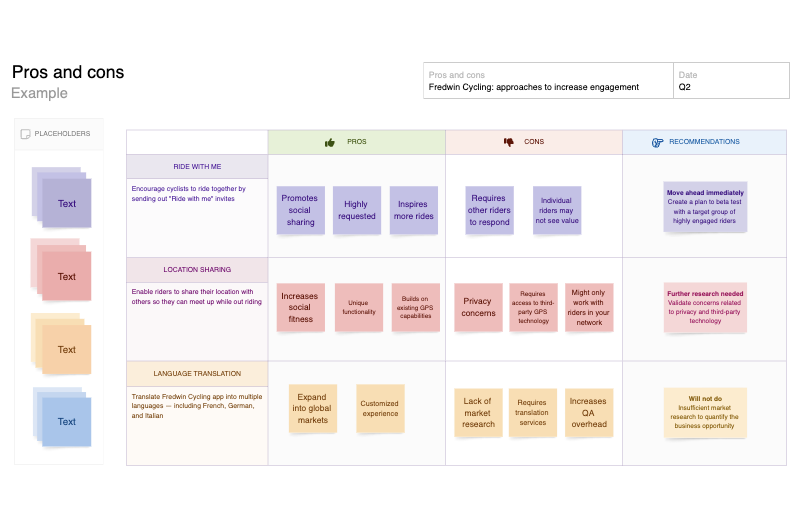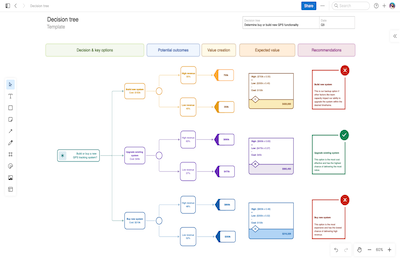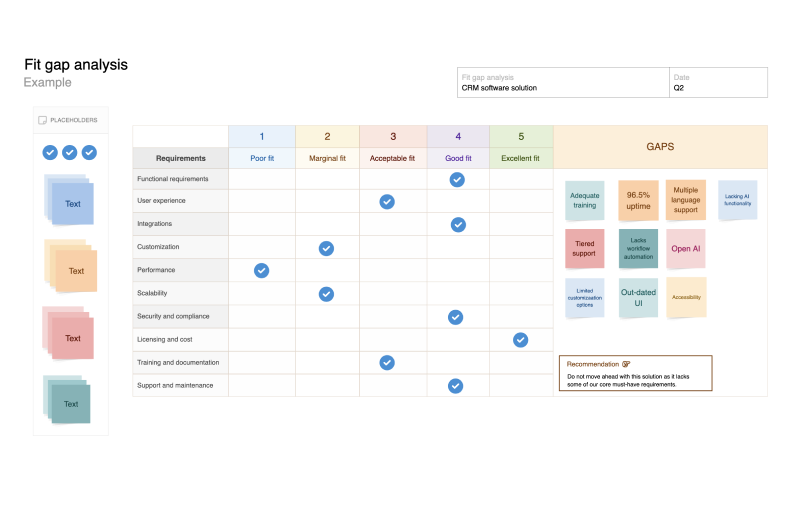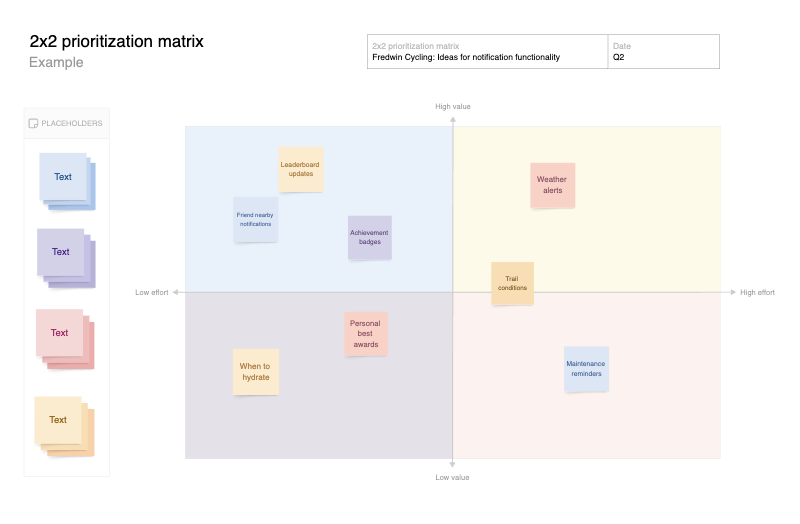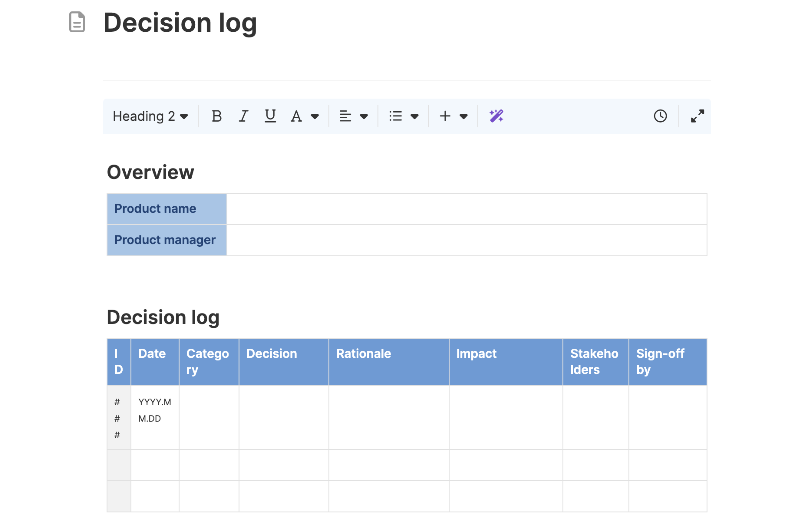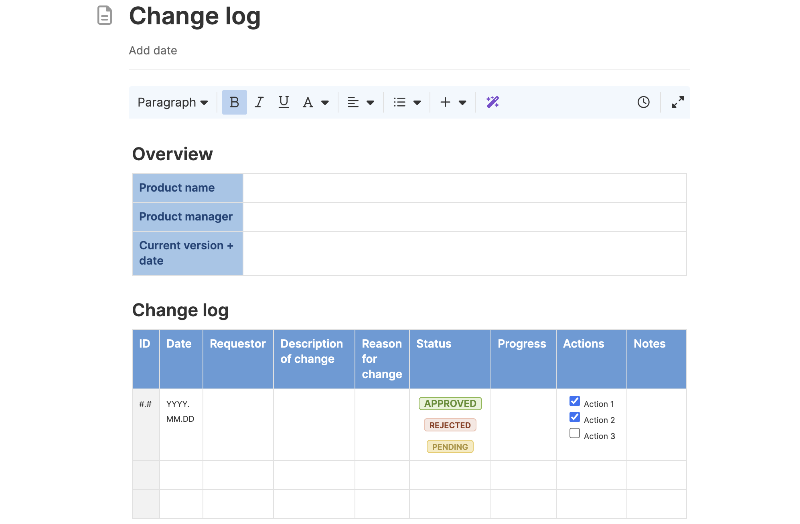Approaches table template
Evaluate the pros and cons of different approaches
Use template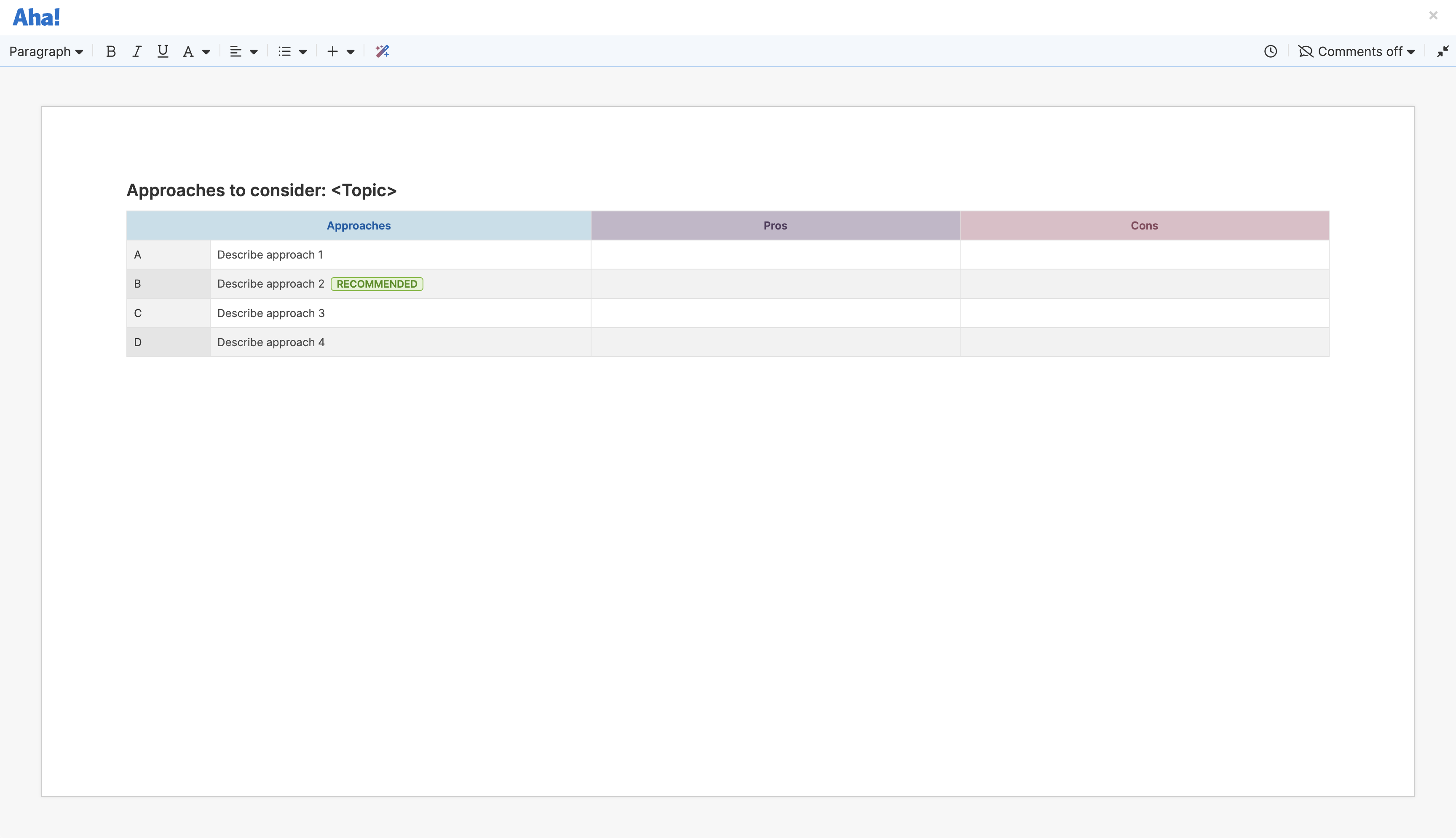
About the approaches table template
Product development often offers multiple ways to achieve a goal. Using this approaches table allows you to compare and evaluate the value of different options. Start by listing potential pathways for reaching your goal or solving the problem, and then add their respective pros and cons. This structured view helps you weigh your options and align the team on the best course of action.
Included in the approaches table template
This approaches table template includes built-in capabilities such as:
A structured way to capture and define different approaches
Quick access to best practices
A rich text editor to help you format content clearly
An AI assistant to support you as you research, write, and revise
Inline comments to gather feedback, questions, and ideas from teammates
How to use the approaches table template
Use this approaches table template to capture and compare the basic descriptions, pros, and cons of different ways to tackle your work. It is a useful tool for evaluating options during research or planning efforts. For example, you might use it to decide on the best product development framework for your organization, determine the ideal frequency for releasing new customer experiences, or evaluate pricing structures (like monthly, yearly, or pay-as-you-go).
By describing each option and exploring the positives and negatives with the team, you gain a clear view of potential outcomes — so you can make more confident, informed decisions.
Best practices
Capture potential positives and negatives of various courses of action.
Identify key approaches: Briefly describe the options you want to evaluate. These might be different strategies, tools and technologies, or project methodologies that are relevant to your goal.
Add pros and cons: List the strengths and weaknesses of each approach. To stay objective, do some light research to help validate what you enter as potential positives and negatives. Consider how similar approaches performed in the past.
Evaluate and compare: Use the template table to review each approach. The balanced format can make it easier for teams to collectively determine risk tolerance and align on the best way forward.
Invite stakeholders: Share the approaches table template with key stakeholders who can weigh in and provide feedback. Incorporate insights from across the development team to reach a consensus on the best option.
FAQs about the approaches table template
Why is the approaches table important?
The approaches table helps teams evaluate different ways to accomplish work in a structured, objective way. With a clear comparison list that defines known and potential pros and cons of various approaches, product development teams can improve and accelerate the decision-making process.
What are some best practices for using the approaches table?
Keep the information you include on your table concise and focused on what is most relevant for each approach. Engage cross-functional team members for input to ensure a complete view of each pathway. Finally, revisit the document as needed to reflect any new insights or additional courses of action.
How detailed should an approaches table be?
The level of detail will depend on the complexity of what you evaluate. Overall, try to strike a balance — include enough information to make an informed choice, but avoid overwhelming the table with unnecessary details. This will help you streamline the decision-making process.
Is this template free to use?
Yes. To use this approaches table template, sign up for a free 30-day trial of Aha! Whiteboards. (You can also try this template in Aha! Roadmaps if you need a complete product management solution.) Easily customize the template to suit your needs, then share it with as many people as you want (for free) to streamline collaboration.
